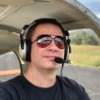a different approach to comparing actual performance to POH...
-
Members Online
- joemoriss
- LooneyMooney
- exM20K
- Wingover
- richardbrochu27
- Ryan ORL
- Marc_B
- Bunti
- Robert Hicks
- good2eat
- hammdo
- ProtoFly
- Rocket_Driver
- LANCECASPER
- LP1
- Black
- GeeBee
- Skyland
- TangoTango
- Schllc
- Dean Showalter
- Raptortail
- Seaport243
- Ian Morcott
- dzeleski
- chrisburdzy98
- Fritz1
- John J
- wolfbyte
- Sabremech
- 201Mooniac
- Greg Ellis


Recommended Posts
Join the conversation
You can post now and register later. If you have an account, sign in now to post with your account.